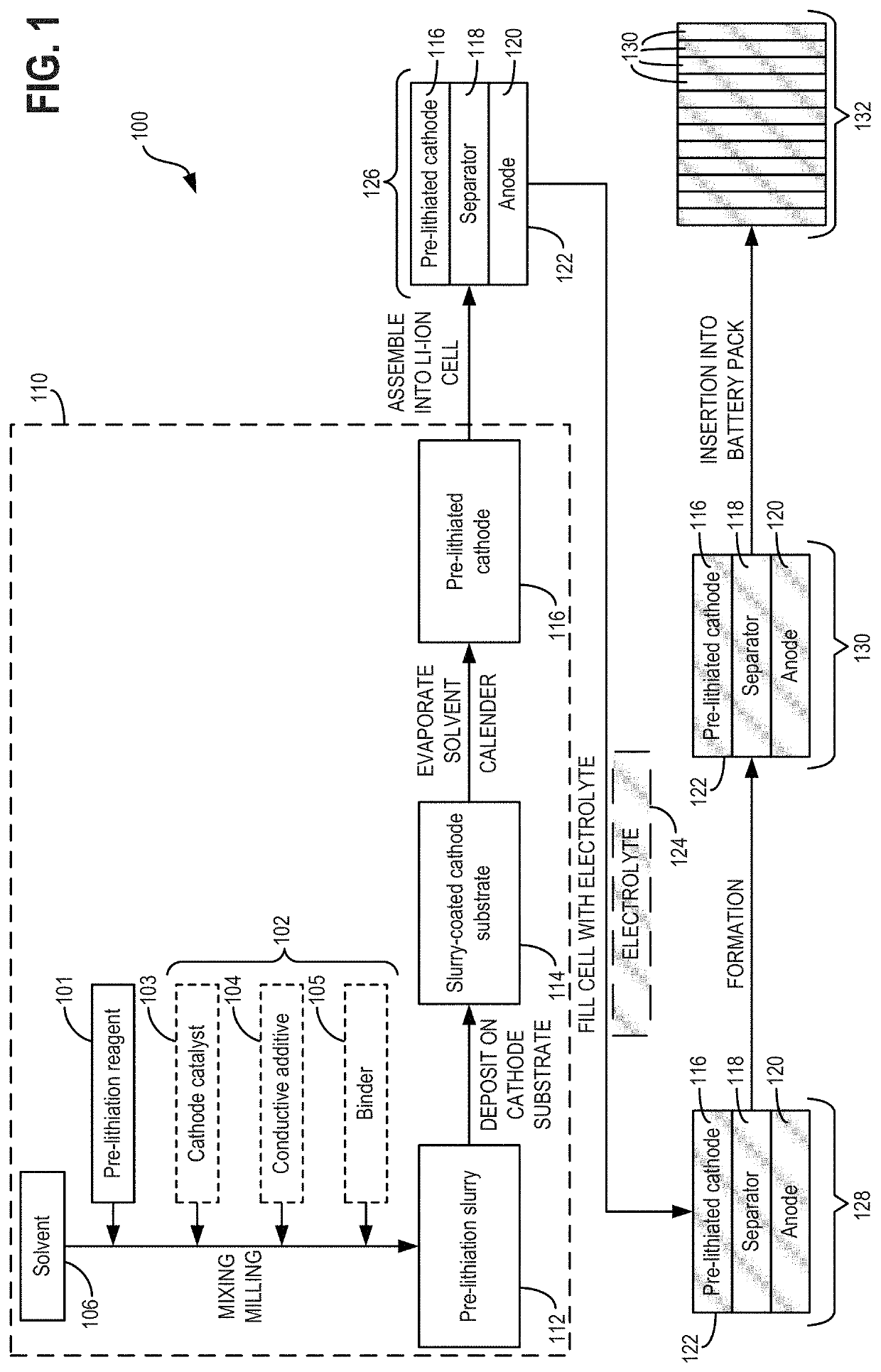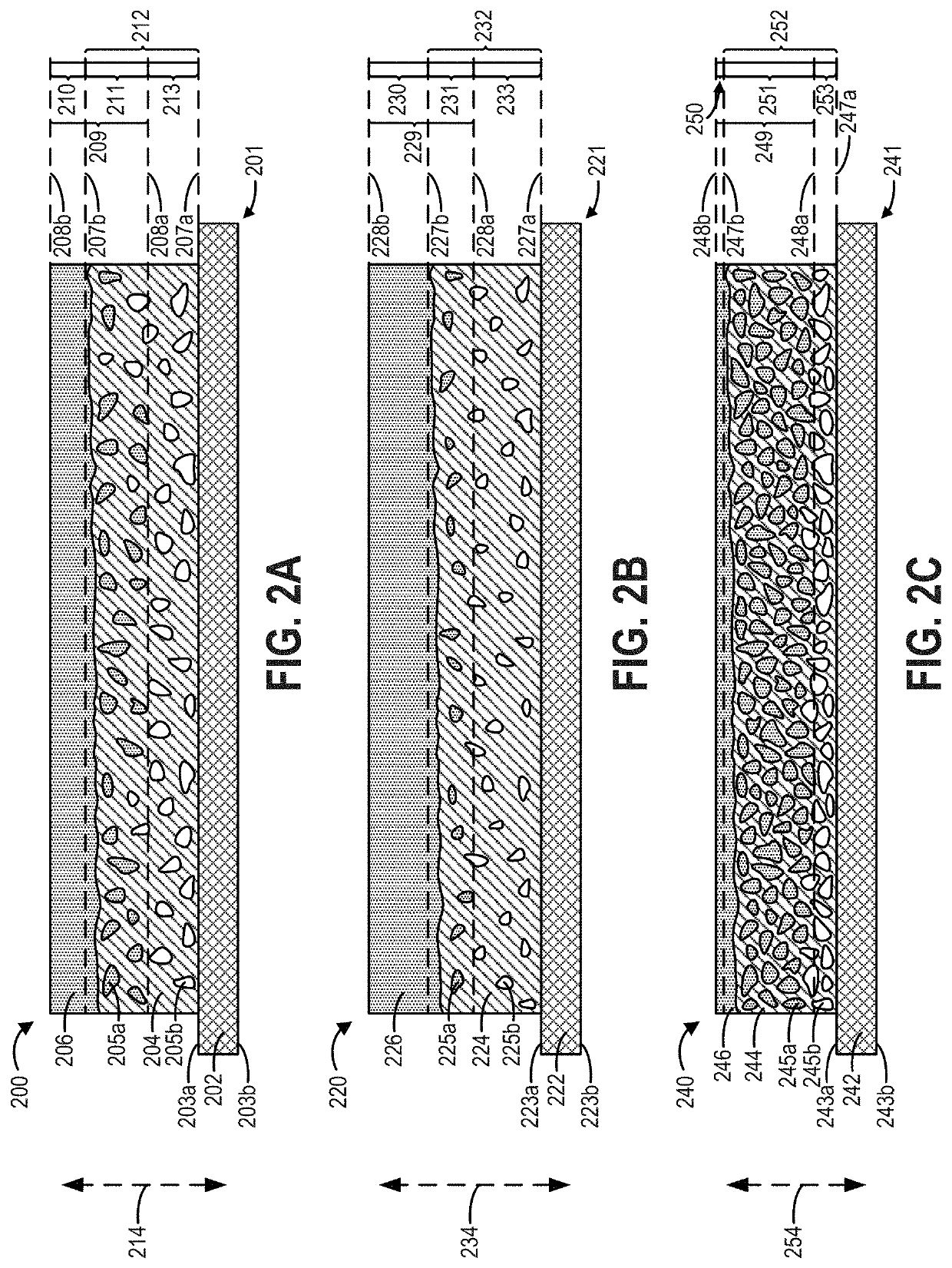Methods and systems for cathode pre-lithiation layer
- Summary
- Abstract
- Description
- Claims
- Application Information
AI Technical Summary
Benefits of technology
Problems solved by technology
Method used
Image
Examples
Embodiment Construction
[0025]The following description relates to methods and systems for forming cathode pre-lithiation layers and slurries therefor. As described herein with reference to FIG. 1, the cathode pre-lithiation layer may be applied to a cathode substrate to form a pre-lithiated cathode for a lithium-ion secondary battery (referred to herein as a “lithium-ion battery”). The cathode pre-lithiation layer may be formed by casting, drying, and calendering a slurry on the cathode substrate, the slurry including a nanoscale pre-lithiation reagent uniformly dispersed throughout. The uniform dispersion of the nanoscale pre-lithiation reagent in combination with the relatively small physical dimensions thereof may result in an increased mechanical integrity of the finally-formed cathode pre-lithiation layer, as well as facilitating slurry processing and increasing an overall slurry quality. Further, in some examples, the slurry may further include one or more additives, such as a cathode catalyst, a bi...
PUM
 Login to View More
Login to View More Abstract
Description
Claims
Application Information
 Login to View More
Login to View More - R&D
- Intellectual Property
- Life Sciences
- Materials
- Tech Scout
- Unparalleled Data Quality
- Higher Quality Content
- 60% Fewer Hallucinations
Browse by: Latest US Patents, China's latest patents, Technical Efficacy Thesaurus, Application Domain, Technology Topic, Popular Technical Reports.
© 2025 PatSnap. All rights reserved.Legal|Privacy policy|Modern Slavery Act Transparency Statement|Sitemap|About US| Contact US: help@patsnap.com



